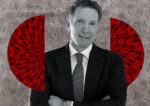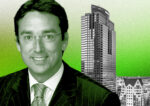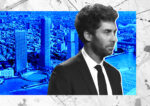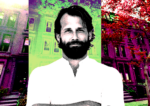Trending
The Closing: Roy March
The Eastdil CEO on his blue-collar roots, not being a ‘freak’ and brokering trophy towers across the country
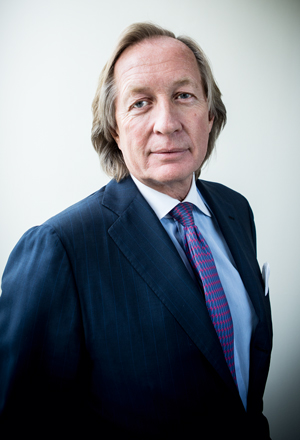
Roy March [TRDataCustom] is the larger-than-life CEO of Eastdil Secured, which has been NYC’s top investment sales brokerage for the past six years. In 2016, the firm, which also provides real estate investment banking and debt services, logged a record $22.9 billion in closed deals. March joined Eastdil — which has 13 offices and 325 employees globally — in 1978 and took over as president in 1994, five years before the firm was sold to Wells Fargo. In 2006, as the firm was merging with the L.A.-based Secured Capital, he was named CEO. Last year, the firm’s top two brokers, Doug Harmon and Adam Spies, decamped for Cushman & Wakefield. While the loss was a blow, it revealed March’s involvement in a slew of high-profile deals, including the $1.95 billion sale of the Waldorf Astoria hotel in 2015.
DOB: July 22, 1956
Hometown: Sacramento
Lives in: Midtown
Family: Married to second wife; three children
What were you like as a kid? I was kind of a ragtag kid. I grew up on the south side of Sacramento, and my folks were civil servants. Mom worked at the Department of Motor Vehicles and shopped at Kmart, and Dad was a civilian in the Army. My brothers were nine and 12 years older, so I pretty much grew up as an only child.
What’s the significance of your middle name, Hilton? I was named after my grandfather. My father also had a brother named Roy Hilton March who was an infant death. I started using my full name in college because I thought Roy March wasn’t flamboyant enough. [Eastdil founder] Ben Lambert was a Hilton board member, so people later assumed that I was from the Hilton clan. Couldn’t be further from it.
What was your first job? Selling clothes at a college apparel shop in Sacramento at age 16. I had to do it to buy a car.
What were your college days like? I went to the University of California, Davis to study chemical engineering in 1974. I was put on academic probation for the first two semesters. I decided to take introductory courses across a breadth of fields to get off probation. I took microeconomics and, suddenly, everything made sense. But coming from a blue-collar background, I had no idea what to do with an education in economics. So, I began frantically pursuing things like starting a finance club and getting involved in student government. In the summer of 1976, I got a real estate license along with a lot of blue-haired retirees.
How’d you end up at Eastdil? I interned at investment bank Blyth Eastman Dillon, and on that same floor, there was a subsidiary called Eastdil Realty. I went over there … and got hired for free on April 3, 1978. I never left.
One of your biggest deals was the 2003 sale of the GM Building to Harry Macklowe for $1.4 billion. How did that come about? My role was helping advise the seller, Conseco. In August 2002, we were in the middle of selling [a $340 million hotel portfolio] in Sardinia for Starwood. I took residence there for a month, and while I was there I got a call about a large unrelated transaction for industrial land in Hawaii. The seller wanted me to come to Hawaii to discuss it. I was literally halfway around the world, but I agreed to do it. I was traveling with just an Eastdil beach bag, which has been my briefcase for the last 20 years. I was in the Concorde lounge at JFK, and I see this guy [Harry Macklowe] eyeing me and it was a little awkward. At the time, I didn’t know him.
Macklowe’s first impression of you as a “freak” with “shit-kicker boots” was recounted in the “The Liar’s Ball.” What’s your take on that view of you? It’s a Harry Macklowe-ism. I don’t think anybody really thinks of me as a freak. I think people respect being your own person. But if you’re going to be enigmatic or quirky, you better be very good at what you do. For the record, though, I don’t attempt to be any of that. I only try to be as authentic as I can be.
What was your impression of him? All I remember was this very eccentric person who had latched onto the fact that I was at Eastdil and involved in the GM Building. We went on a sailboat, and I saw he was sketching my wife’s foot — her foot bracelet. If that isn’t a little eccentric…
Is it ever a disadvantage to be seen as an enigma? One time, my partners told me, “On this trust, we’ve got two former U.S. military officials. Can you get your hair cut for the pitch meeting?” I totally disregarded their advice and told them, “If you could do for me what my wife does for me, I’ll get it cut.”
How did you meet your second wife? I saw Barbara in the 1990s in L.A., walking through a restaurant, and thought she was the most exquisite creature I’d ever seen. Unfortunately, her husband, who I knew, was walking behind her. Three years later, I ended up meeting her again at the Plaza Hotel. We were both divorced, and I was very single.
What did you learn from your first marriage? Basically, I was blindly ambitious. … That drove me to not be as good a person as I could be, and I made bad choices.
What do you like to do outside of work? In the last couple years, I reached “11 Million Miler” status with American Airlines. That’s close to two-and-a-half years in the air. That’s why I look so young. I only go counter-clockwise, so I reverse the aging process. My hobby is trekking and combining that with philanthropy. My wife runs March to the Top Africa, a charity we started in 2006. We’ve climbed Mount Kilimanjaro, the Inca Trail to Machu Picchu, and 500 miles across Spain on the Camino de Santiago — all to raise funds for African communities.
What is one of your more surprising friendships? The film and TV producer Brian Grazer.
How are things with you and Harmon these days? No comment.
Do you have any regrets? No. I’ve shaped an organization that’s respected. There are very few deals you can name that we haven’t been involved in at least once. Sears Tower, Sony, World Trade, GM, Bank of America building, Arco Towers. I did those last three in one year.
How do you want to be remembered? Kind and gracious. When you’re in this business long enough, you hope that you develop a reputation for being fair and honest and handling yourself with integrity. TRD

